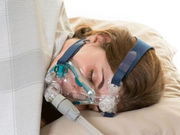Neurology
Home Neurology
Siponimod Cuts Risk of Disability Progression in Multiple Sclerosis
Reduction in 3-month confirmed disability progression in secondary progressive multiple sclerosis
Lean Approach May Help Tackle Burnout in Health Care Providers
Creation of a huddle board represents one method to address issues in a timely manner
MVPA Mortality Risk Reduction Not Tied to Exercise in Bouts
Lower mortality risk seen with moderate-to-vigorous physical activity regardless of how it is accumulated
Unique Risks Associated With Texting Medical Orders
Institute of Safe Medication Practices indicates risks such as abbreviations, autocorrection
Blueprint Being Developed to Address Physician Burnout
As part of blueprint, task force developing strategies that can be adopted by any institution/practice
Hormone Therapy May Impact Brain Structure, Cognition
But 3 years after menopausal HT, change in brain volumes not significantly different from placebo
Sweetened Drinks Linked to Increased Risk of Mortality
Risk of CVD-related, CHD-related, all-cause mortality up for highest versus lowest quartile of intake
Altered Neural Responses in Memory Processing in T1DM
Significantly stronger neural responses in superior parietal cortices during memory encoding in T1DM
No Benefit for MRI After Normal Cervical CT in Blunt Trauma
MRI had lower health benefit and higher cost compared with no follow-up after normal CT findings
Reduced Cortical Thickness ID’d in Obstructive Sleep Apnea
Female OSA patients had multiple regions of reduced cortical thickness in superior frontal lobe



















